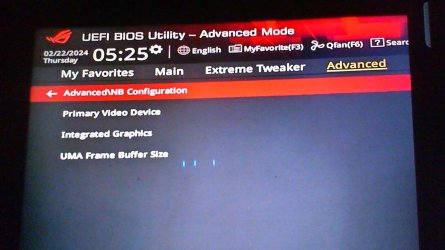- Joined
- May 12, 2006
- Messages
- 1,616 (0.23/day)
- Location
- The Gulag Casino
| System Name | ROG 9800X3d By purecain |
|---|---|
| Processor | AMD Ryzen 7 9800X3D |
| Motherboard | ASUS Crosshair X670E Hero |
| Cooling | Noctua NH U12A |
| Memory | 64Gb G.Skill Trident Z5 neo RGB 6400@6000mhz@1.41v |
| Video Card(s) | Aorus RTX4090 Extreme Waterforce |
| Storage | 990Pro2Tb-1TbSamsung Evo M.2/ 2TbSamsung QVO/ 1TbSamsung Evo780/ 120gbKingston Now |
| Display(s) | LG 65UN85006LA 65" Smart 4K Ultra HD HDR LED TV |
| Case | Thermaltake CoreX71 Limited Edition Etched Tempered Glass Door |
| Audio Device(s) | On board/NIcomplete audio 6 |
| Power Supply | Seasonic FOCUS 1000w 80+ |
| Mouse | M65 RGB Elite |
| Keyboard | K95 RGB Platinum |
| Software | Windows11pro |
| Benchmark Scores | [url=https://valid.x86.fr/gtle1y][img]https://valid.x86.fr/cache/banner/gtle1y-6.png[/img][/url] |
Ive done a little reading and it turns out those of us with the little screens that run on HDMI would be fine to run AIDA64 through it for all temps and details.
Apart from that it can be simply used to avoid driver conflict when setting up a second screen.
I'm not using either and have just disabled the GPU in the bios but it wasn't easy.
Here's the scrn shots you need to find the option on X670E chipsets. I dont know why, but I could not find the gpu option for about an hour. Hope this saves others the time on Asus chipsets.
Its in Northbridge settings.



Apart from that it can be simply used to avoid driver conflict when setting up a second screen.
I'm not using either and have just disabled the GPU in the bios but it wasn't easy.
Here's the scrn shots you need to find the option on X670E chipsets. I dont know why, but I could not find the gpu option for about an hour. Hope this saves others the time on Asus chipsets.
Its in Northbridge settings.





